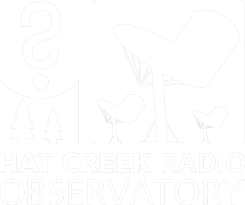Summary
The WOW! Signal was first observed on August 15, 1977 by the Ohio State University's Big Ear radio telescope near the 21-cm hydrogen line at 1420 MHz, and has not been redetected since. The Breakthrough Listen team conducted its first search for the WOW! Signal, following Caballero's (2022) identification of the star 2MASS 19281982-2640123 as a potential Sun-like star from which the signal could have originated. Located 1,788 light-years away, this star has a temperature, radius, and luminosity almost identical to that of our Sun. We analyzed L-band (1-2 GHz) data from observations conducted on May 21, 2022 using both the Green Bank Telescope (two 30-min observations) and the Allen Telescope Array (six 5-min observations) to search for artificial narrowband signals of technological origin, where a total of 9 minutes and 40 seconds where simultaneously observed with both telescopes. No technosignature candidates were found, although there remains an abundance of other stars from which the signal could have originated.
Pulsar observations:
Data
Data sets used for this analysis can be downloaded from our public data server.
GBT Data: Raw voltage data were reduced to multiple channelized data products using the standard BL data reduction pipeline (Lebofsky 2019). Here we include all three standard BL data products for the GBT (bandwidth / integration time of ~2.79 Hz/~18.25 s, 366.21 kHz / 349.53 us, 2.86 kHz / 1.07 s) for each pointing. The observations used in this analysis are labeled DIAG_6EQUJ5_1 (or DIAG_6EQUJ5_2 for the second cadence) for the on-sources and HIP9463, HIP94394, HIP94062 (or HIP94637, HIP94783, HIP94394 for the second cadence) for the off-sources. The first observation for the first cadence, numbered 0016, is an on-target pointing (0022 for the second cadence), after which on- and off-target pointings alternate. The high spectral resolution, high time resolution, and medium resolution data products have suffixes of 0000, 0001, and 0002, respectively. We used the highest spectral resolution product for the search described here.
ATA Data: Both ATA beams were channelized to a spectral resolution of 1.91 Hz and a time resolution of 1.05 s, and a total of 6 observations were made. The data here is available in RAW format and each of the 6 pointings is divided into 7 subbands of 96 MHz each.


